 As scientists at the top US universities extend their research initiatives to the new frontiers of computing, Yahoo! has announced the expansion of its Hadoop-based M45 academic research initiative to include four additional US universities, including the University of Washington. Launched in November 2007, the M45 program is providing universities with the opportunity to conduct research otherwise impossible without the power and speed of a large-scale supercomputing resource. M45 consists of approximately 4,000 processors with 1.5 petabytes of storage.
As scientists at the top US universities extend their research initiatives to the new frontiers of computing, Yahoo! has announced the expansion of its Hadoop-based M45 academic research initiative to include four additional US universities, including the University of Washington. Launched in November 2007, the M45 program is providing universities with the opportunity to conduct research otherwise impossible without the power and speed of a large-scale supercomputing resource. M45 consists of approximately 4,000 processors with 1.5 petabytes of storage.
Examples of academic research conducted on the M45 includes one of the world’s largest knowledge acquisition research projects — UW CSE’s KnowItAll.
Read the Yodel Anecdotal post here. The Register here. Read more →
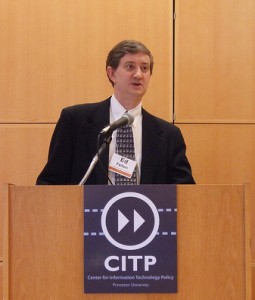 UW CSE PhD alum Ed Felten was named as the US Federal Trade Commission’s first Chief Technologist. In this new position, Dr. Felten will advise the agency on evolving technology and policy issues. Felten is currently the Director of Princeton University’s Center for Information Technology Policy (CITP), a cross-disciplinary effort studying digital technologies in public life. His research interests include computer security and privacy, and public policy issues relating to information technology. Specific topics include software security, Internet security, electronic voting, cybersecurity policy, technology for government transparency, network neutrality and Internet policy.
UW CSE PhD alum Ed Felten was named as the US Federal Trade Commission’s first Chief Technologist. In this new position, Dr. Felten will advise the agency on evolving technology and policy issues. Felten is currently the Director of Princeton University’s Center for Information Technology Policy (CITP), a cross-disciplinary effort studying digital technologies in public life. His research interests include computer security and privacy, and public policy issues relating to information technology. Specific topics include software security, Internet security, electronic voting, cybersecurity policy, technology for government transparency, network neutrality and Internet policy.
Congratulations, Ed!
Read the press release here. Slashdot story here. Read more →
 What causes a baby to decide a robot is more than bits of metal? As it turns out, it takes more than humanoid looks— babies that witness a robot engaged in social interaction with adults are much more likely to themselves treat it as a social entity. UW CSE professor Rajesh Rao and UW psychologists published the study starring the Rao lab robot Morphy. Rao’s team designed the computer programs that make Morphy appear social.
What causes a baby to decide a robot is more than bits of metal? As it turns out, it takes more than humanoid looks— babies that witness a robot engaged in social interaction with adults are much more likely to themselves treat it as a social entity. UW CSE professor Rajesh Rao and UW psychologists published the study starring the Rao lab robot Morphy. Rao’s team designed the computer programs that make Morphy appear social.
Read the UW News article here. Popular Science also covered this research here. Slashdot discussion is here. Read more →
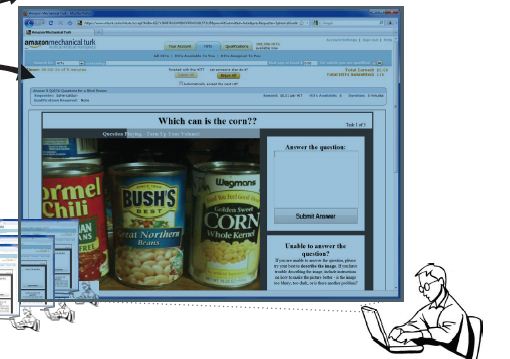 UW CSE Ph.D. alum Jeff Bigham (now at Rochester), UW CSE grad student Chandrika Jayant, and their co-authors received the best paper award at this year’s ACM Symposium on User Interface Software and Technology (UIST) for their paper VizWiz: Nearly Real-Time Answers to Visual Questions.
UW CSE Ph.D. alum Jeff Bigham (now at Rochester), UW CSE grad student Chandrika Jayant, and their co-authors received the best paper award at this year’s ACM Symposium on User Interface Software and Technology (UIST) for their paper VizWiz: Nearly Real-Time Answers to Visual Questions.
Visual information pervades our environment. Vision is used to decide everything from what we want to eat at a restaurant and which bus route to take to whether our clothes match and how long until the milk expires. Individually, the inability to interpret such visual information is a nuisance for blind people who often have effective, if inefficient, work-arounds to overcome them. Collectively, however, they can make blind people less independent. VizWiz is an iPhone application aimed at enabling blind people to recruit remote sighted workers to help them with visual problems in nearly real-time. Users take a picture with their phone, speak a question, and then receive multiple spoken answers. VizWiz is designed to have low latency and low cost, making it both competitive with expensive automatic solutions and much more versatile.
More information on UIST 2010 may be viewed here. Read more →
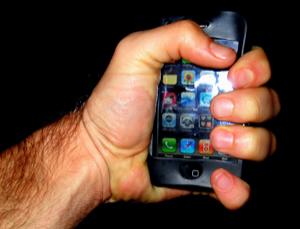 The smartphone of the future might lose its sleek, solid shell. UW CSE’s Shwetak Patel, working with CSE grad Sidhant Gupta, ME undergraduate Tim Campbell, and CSE PhD alum Jeffrey Hightower (now at Intel Labs Seattle), have developed a squeezable cellphone – called SqueezeBlock – which uses tiny motors built into the casing to mimic the behavior of a spring. This novel feedback system changes its ‘shape’ to signal an alert to its user where visual and audible cues won’t suffice.
The smartphone of the future might lose its sleek, solid shell. UW CSE’s Shwetak Patel, working with CSE grad Sidhant Gupta, ME undergraduate Tim Campbell, and CSE PhD alum Jeffrey Hightower (now at Intel Labs Seattle), have developed a squeezable cellphone – called SqueezeBlock – which uses tiny motors built into the casing to mimic the behavior of a spring. This novel feedback system changes its ‘shape’ to signal an alert to its user where visual and audible cues won’t suffice.
“‘You can imagine squeezing the phone to give you a little bit of information on its status – ring level, messages – without having to look at it,’ says Patel.”
This work was presented at ACM’s UIST 2010 last week in New York.
Read the full NewScientist article here. Popular Science here. Read more →
 UW CSE Professor Alan Borning and CSE grad student Travis Kriplean, as part of the research conducted by the Engage project, have unveiled a new website devoted to promote civic engagement. It’s based on their open-source ConsiderIt platform.
UW CSE Professor Alan Borning and CSE grad student Travis Kriplean, as part of the research conducted by the Engage project, have unveiled a new website devoted to promote civic engagement. It’s based on their open-source ConsiderIt platform.
The Living Voters Guide, funded by the National Science Foundation, lets citizens discuss and share information by letting them work together to write their own voters guide. Its purpose is to help Washington voters to make decisions about the many and complex statewide initiatives on the ballot this November. The Living Voters Guide provides an interactive online platform for all Washingtonians to express their values and concerns, read contrasting ideas, weigh pros and cons, and reach decisions that are informed by community wisdom.
Read the press release here. Washington News Council here. Seattle Times here. UW’s The Daily here. Read more →
 Congratulations to the dub team!
Congratulations to the dub team!
* Ubicomp 2010 Best Paper Award
ElectriSense: Single-Point Sensing Using EMI for Electrical Event Detection and Classification in the Home, Sidhant Gupta, Matt Reynolds, Shwetak Patel.
ElectriSense is a new solution for automatically detecting and classifying the use of electronic devices in a home from a single point of sensing. It relies on the fact that most modern consumer electronics and fluorescent lighting employ switch mode power supplies (SMPS) to achieve high efficiency. These power supplies continuously generate high frequency electromagnetic interference (EMI) during operation that propagates throughout a home’s power wiring. We show both analytically and by in-home experimentation that EMI signals are stable and predictable based on the device’s switching frequency characteristics. Unlike past transient noise-based solutions, this new approach provides the ability for EMI signatures to be applicable across homes while still being able to differentiate between similar devices in a home. We have evaluated our solution in seven homes, including one six-month deployment. Our results show that ElectriSense can identify and classify the usage of individual devices with a mean accuracy of 93.82%.
* Ubicomp 2010 Best Paper Honarble Mention
SNUPI: Sensor Nodes Utilizing Powerline Infrastructure, Gabe Cohn, Erich Stuntebeck, Jagdish Pandey, Gregory D. Abowd, Brian Otis, Shwetak Patel
The SNUPI paper presents the design and implementation of small ultra-low-power 27 MHz sensor nodes that transmit their data by coupling over the powerline to a single receiver attached to the powerline in the home. We demonstrate the ability of our general purpose wireless sensor nodes to provide whole-home coverage while consuming less than 1 mW of power when transmitting (one order of magnitude lower than existing nodes), and our custom CMOS transmitter consumed only 65 ?W (two orders of magnitude lower than existing nodes). This is the lowest power transmitter to date compared to those found in traditional whole-home wireless systems. (See earlier media coverage here.) Read more →
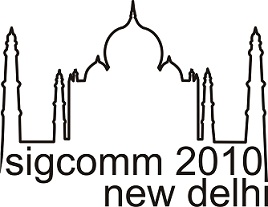 Incoming UW CSE grad student, Seungyeop Han, and his co-authors recently received the best poster award for their poster “Accelerating SSL with GPUs,” which proposes using the computing capabilies of the Graphical Processing Units on computer video cards to cheapen the considerable computational cost of wrapping HTTP communications with SSL encryption. SIGCOMM 2010 was held in New Delhi, India, August 30-September 3, 2010.
Incoming UW CSE grad student, Seungyeop Han, and his co-authors recently received the best poster award for their poster “Accelerating SSL with GPUs,” which proposes using the computing capabilies of the Graphical Processing Units on computer video cards to cheapen the considerable computational cost of wrapping HTTP communications with SSL encryption. SIGCOMM 2010 was held in New Delhi, India, August 30-September 3, 2010.
More information on the conference may be viewed here. Read more →
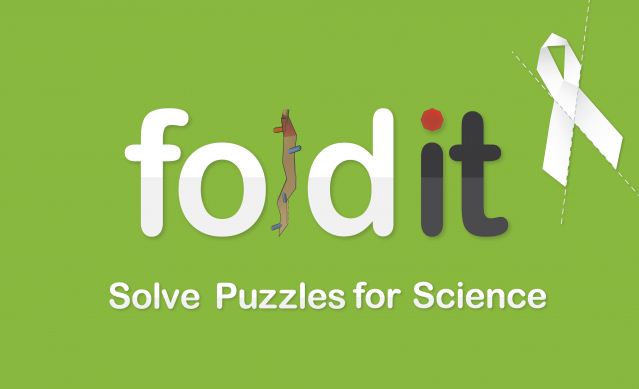 UW CSE’s Zoran Popovic talks with NPR’s David Green about Foldit. As we have reported previously, Foldit is a game in which players compete at protein folding (as improbable as that sounds!). The results give researchers new approaches as they seek to cure diseases like Alzheimer’s and Parkinson’s.
UW CSE’s Zoran Popovic talks with NPR’s David Green about Foldit. As we have reported previously, Foldit is a game in which players compete at protein folding (as improbable as that sounds!). The results give researchers new approaches as they seek to cure diseases like Alzheimer’s and Parkinson’s.
The interview (4:33 audio with transcript) is here.
See earlier news coverage here. Read more →
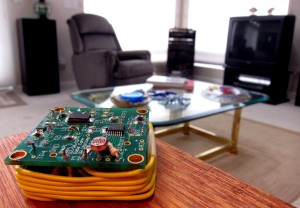 UW CSE’s Shwetak Patel and colleagues at UW and the Georgia Institute of Technology have developed a way to dramatically increase the battery life of sensors in the home, making their use far more practical.
UW CSE’s Shwetak Patel and colleagues at UW and the Georgia Institute of Technology have developed a way to dramatically increase the battery life of sensors in the home, making their use far more practical.
The approach is called SNUPI — Sensor Nodes Utilizing Powerline Infrastructure. The “trick” is to utilize the electrical wiring in the home as a gigantic antenna, picking up very low power wireless signals from sensors and carrying them to a monitoring computer.
SNUPI, which could be used in home automation or medical monitoring, will be presented this month at the Ubiquitous Computing conference in Copenhagen, Denmark. It originated when Patel and co-author Erich Stuntebeck were doctoral students at Georgia Tech and worked with thesis adviser Gregory Abowd. They discovered that home wiring is a remarkably efficient antenna at 27 megahertz. Since then, Patel’s team at the UW has built the actual sensors and refined this method. Other co-authors are UW’s Gabe Cohn, Jagdish Pandey and Brian Otis.
Read the UW News release here. Additional news coverage: TechFlash. Seattle Times. Popular Science. International Business Times. inhabitat. Slashdot. TechNewsDaily. Gizmag. R&D Magazine. Technology Review. Read more →
 As scientists at the top US universities extend their research initiatives to the new frontiers of computing, Yahoo! has announced the expansion of its Hadoop-based M45 academic research initiative to include four additional US universities, including the University of Washington. Launched in November 2007, the M45 program is providing universities with the opportunity to conduct research otherwise impossible without the power and speed of a large-scale supercomputing resource. M45 consists of approximately 4,000 processors with 1.5 petabytes of storage.
As scientists at the top US universities extend their research initiatives to the new frontiers of computing, Yahoo! has announced the expansion of its Hadoop-based M45 academic research initiative to include four additional US universities, including the University of Washington. Launched in November 2007, the M45 program is providing universities with the opportunity to conduct research otherwise impossible without the power and speed of a large-scale supercomputing resource. M45 consists of approximately 4,000 processors with 1.5 petabytes of storage.








